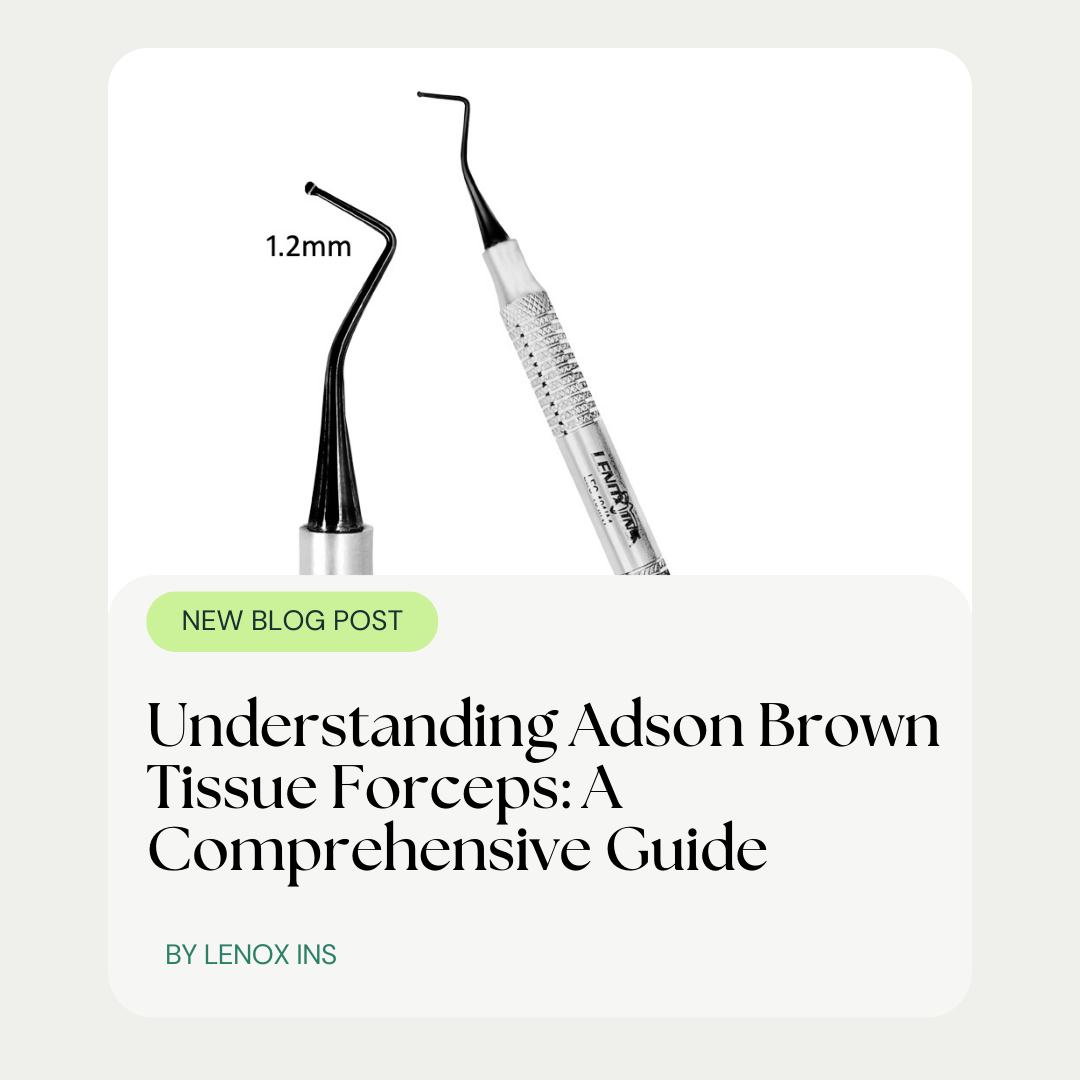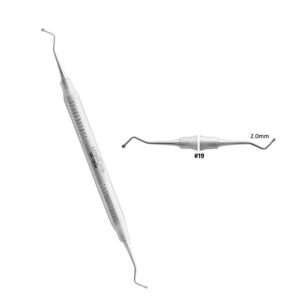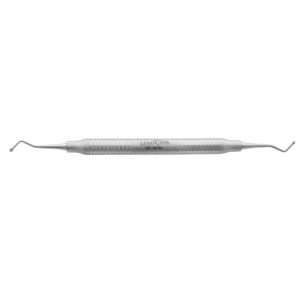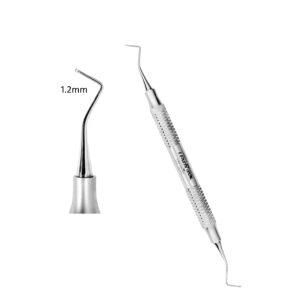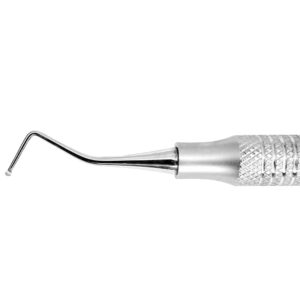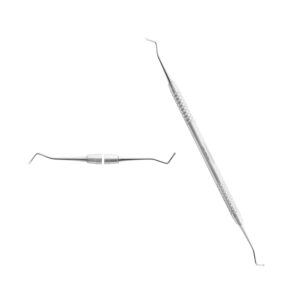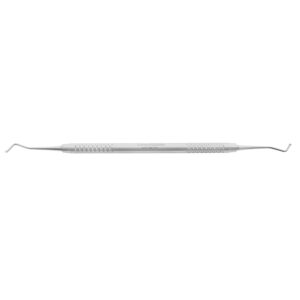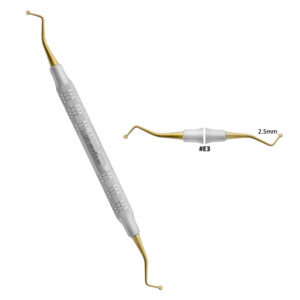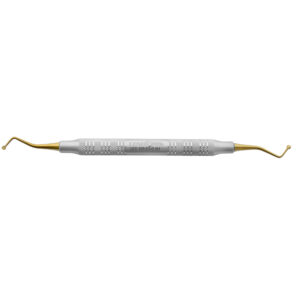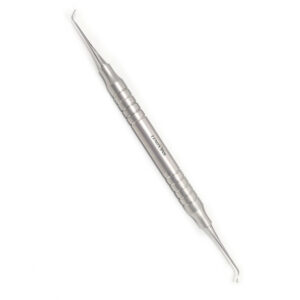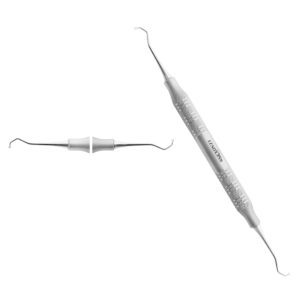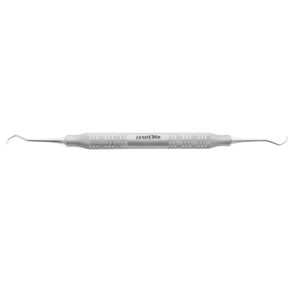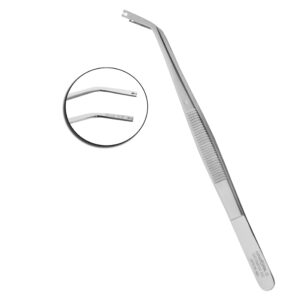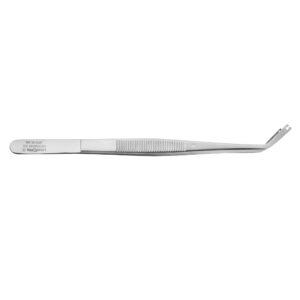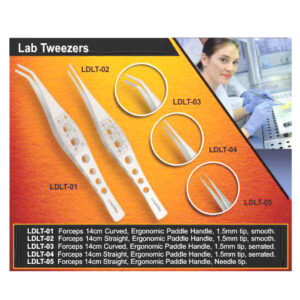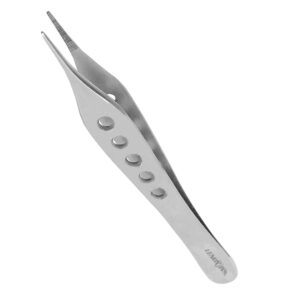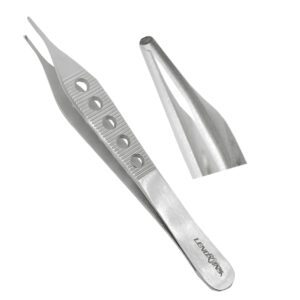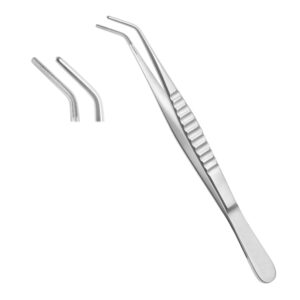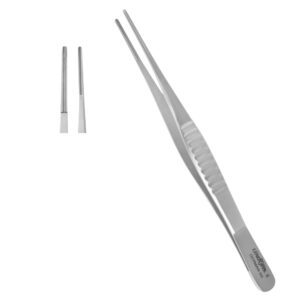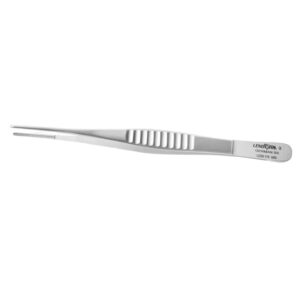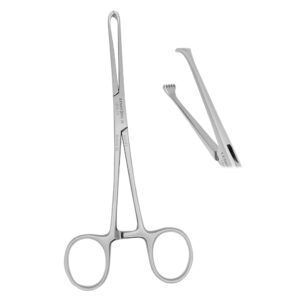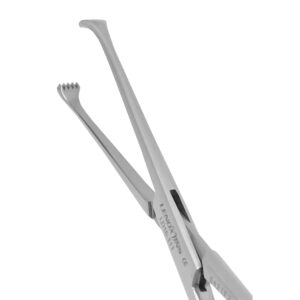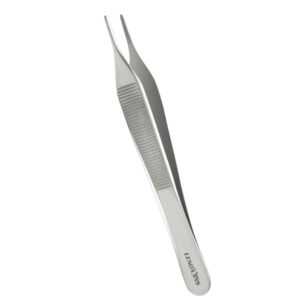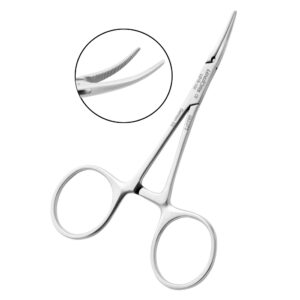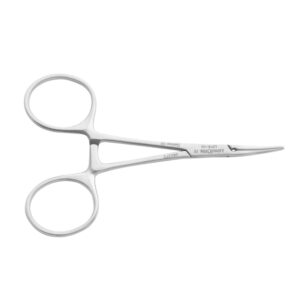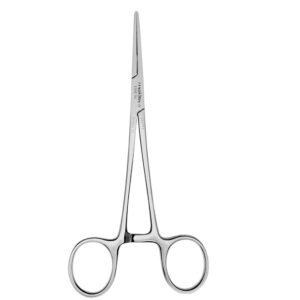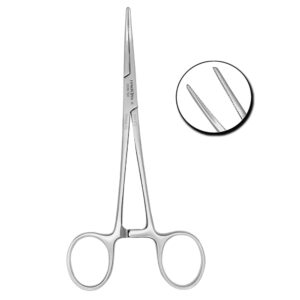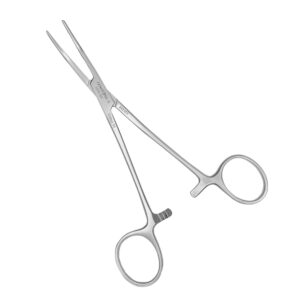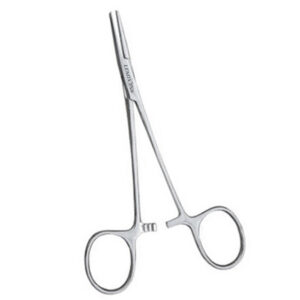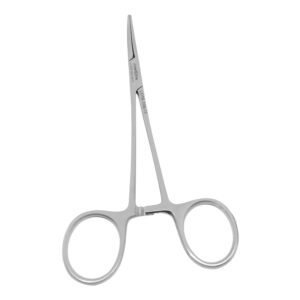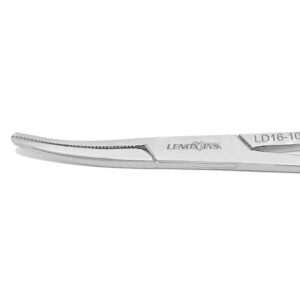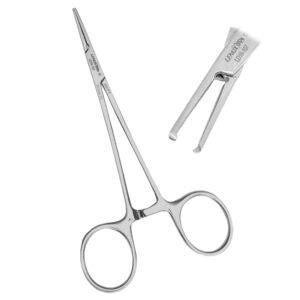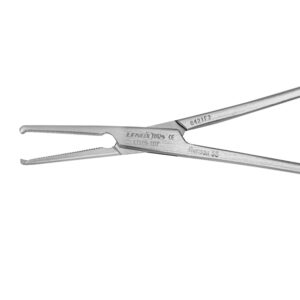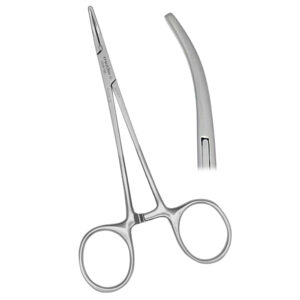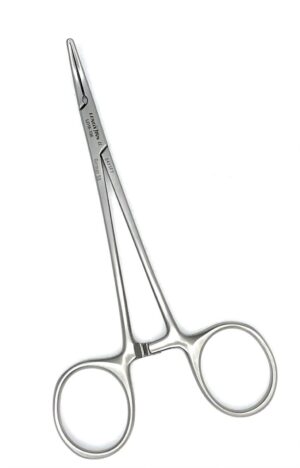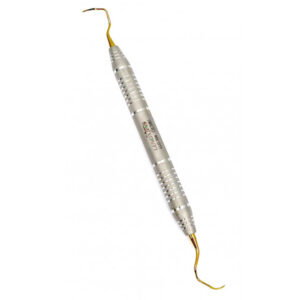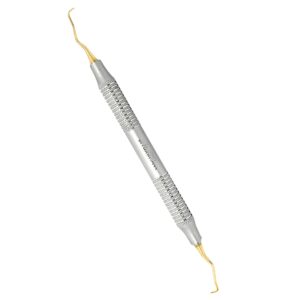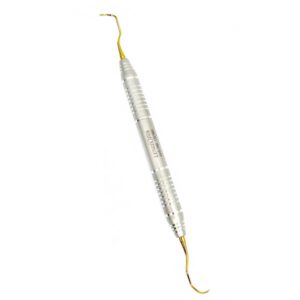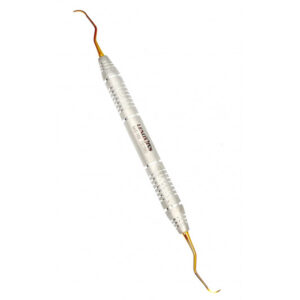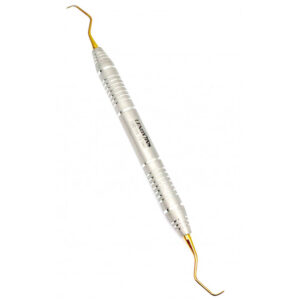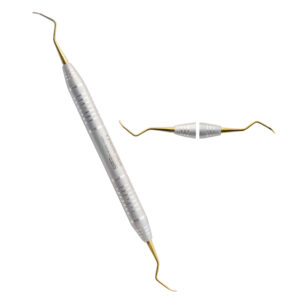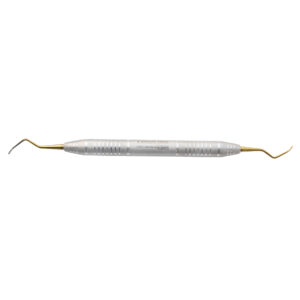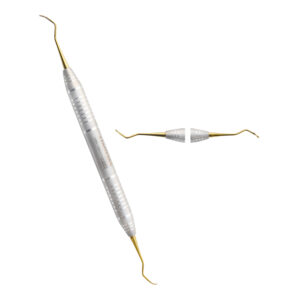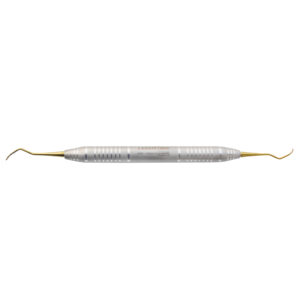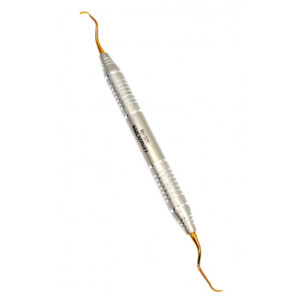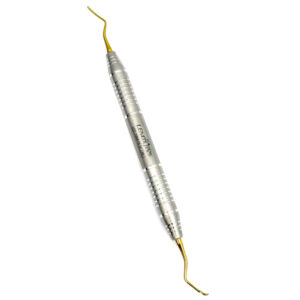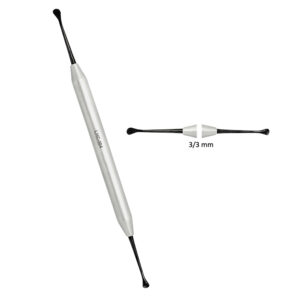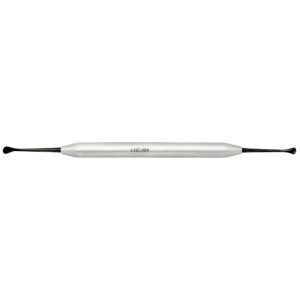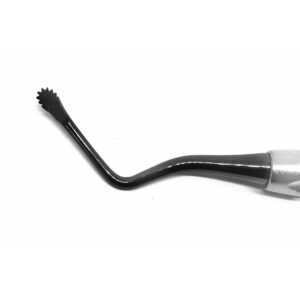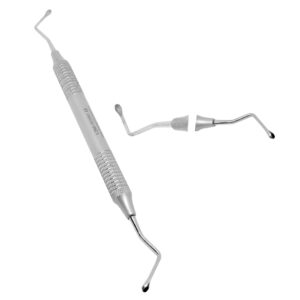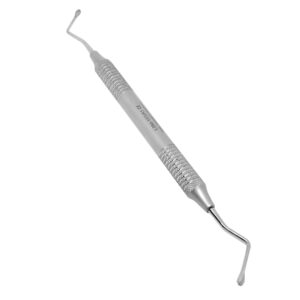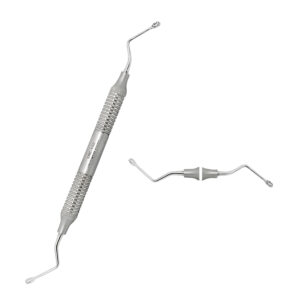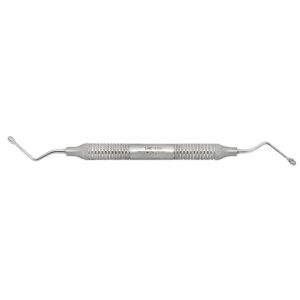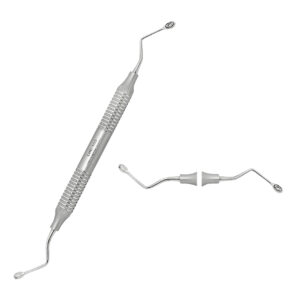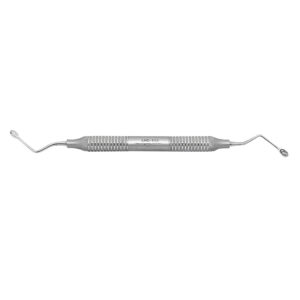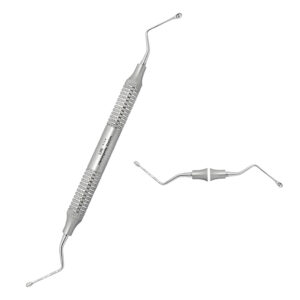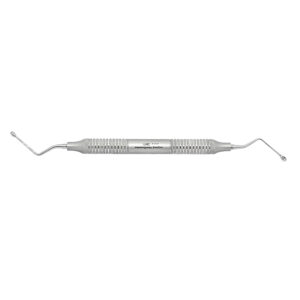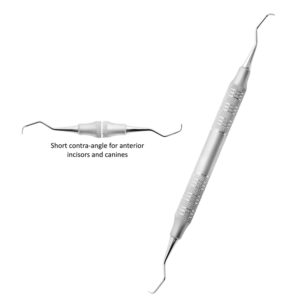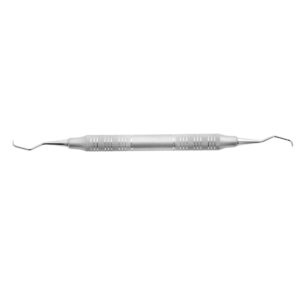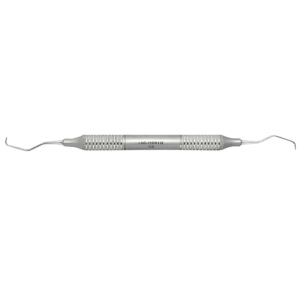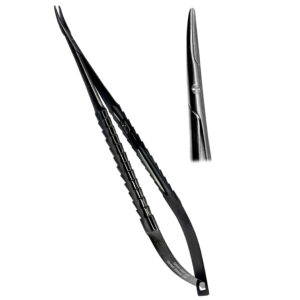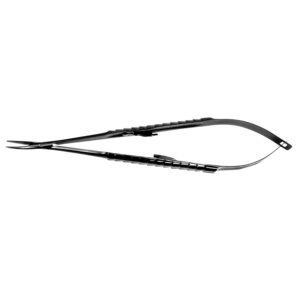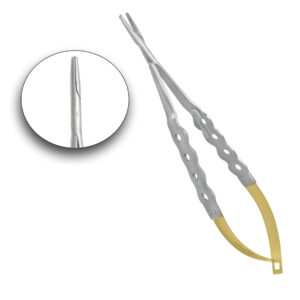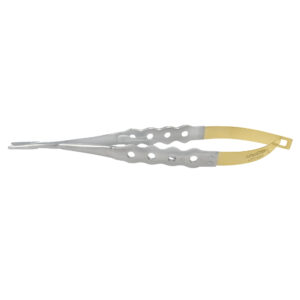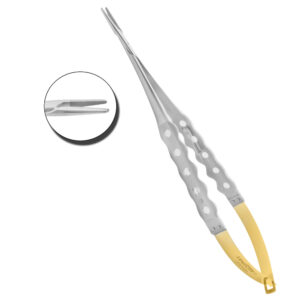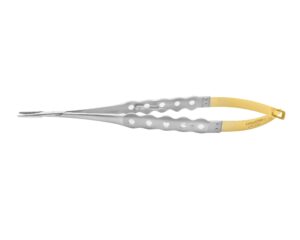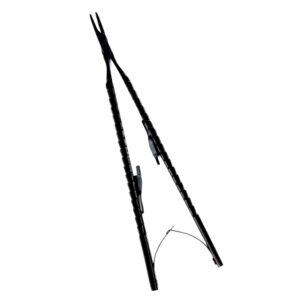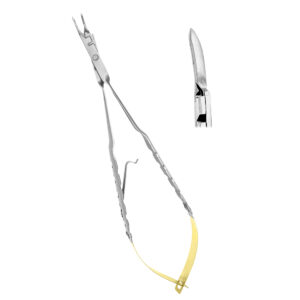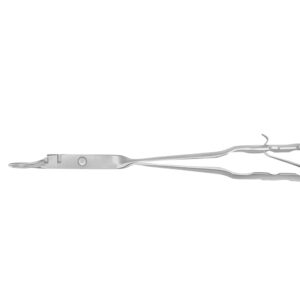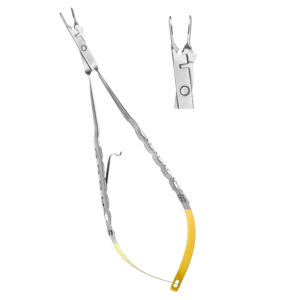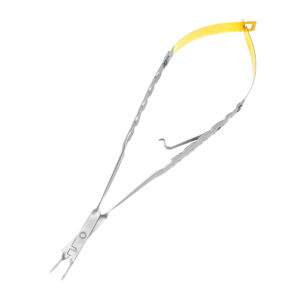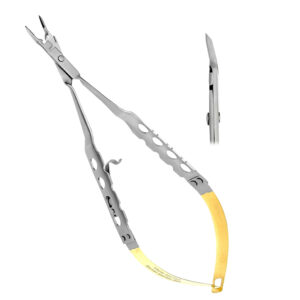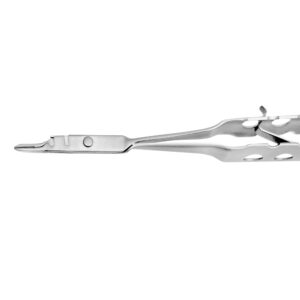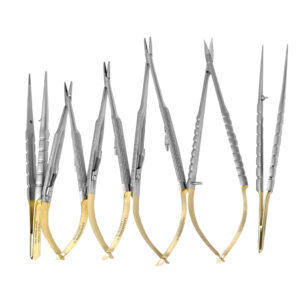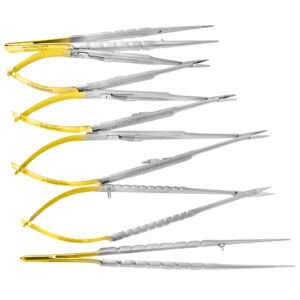Comprehensive Guide to Choosing the Right Spoon Excavator for Dental Procedures
- Posted December 6, 2024
- by lenoxinstro
Are you struggling to select the ideal spoon excavator for your endodontic procedures? This guide will navigate you through the essentials of spoon excavators, a critical tool for removing decayed pulp and preparing cavities. We’ll discuss the various types available, key factors to consider such as the material and design, and how to maintain your tools for longevity. By understanding these elements, you’ll ensure precise handling during procedures like sinus lifts. Plus, we’ll provide insights on where to find quality dental excavators that meet your practice’s needs. With this knowledge, you can enhance patient outcomes and streamline your dental toolkit.
Understanding the Role of Spoon Excavators in Dentistry
In the realm of restorative dentistry, spoon excavators emerge as a fundamental tool, pivotal for the meticulous removal of caries and the preparation of cavities for composite fillings. These instruments play a crucial role in ensuring that decayed material is carefully extracted, paving the way for successful dental restorations. The upcoming sections will delve into the specific functions of spoon excavators in dental procedures, their effectiveness in caries removal, and their indispensable value in restorative dentistry, providing dental professionals with practical insights for selecting the appropriate tool for each unique case.
Function of Spoon Excavators in Dental Procedures
Spoon excavators, crafted from durable stainless steel, are designed to meticulously remove soft caries and debris from cavities, a task that is essential before the placement of a filling. Unlike extraction forceps, which are used to remove teeth, spoon excavators have a unique shape that allows for precise control and minimal discomfort for the patient. Their design is crucial for dentists to ensure that all decayed material is removed, creating a clean environment for a filling to adhere properly.
In practice, the spoon end of the excavator acts much like a spatula, gently scooping out decayed dental tissue while preserving the integrity of the surrounding healthy tooth structure. This precision is particularly important in preventing the over-removal of tooth material, which can lead to further complications. Dental professionals often rely on the tactile feedback from the stainless steel instrument to distinguish between the compromised and healthy areas, an expertise that syringes and other dental tools cannot replicate.
How Spoon Excavators Aid in Caries Removal
Spoon excavators are a dental instrument essential for the effective removal of carious tissue, acting as a safeguard to maintain the structural integrity of the tooth. Their design allows for the precise debridement of soft decay, which is critical for the success of endodontic treatments. Unlike scissors or a dental mirror, which serve other specific functions in the dental toolkit, the spoon excavator is uniquely suited for this delicate task, providing dentists with the ability to feel the difference between diseased and healthy tissue, thus avoiding unnecessary removal of sound tooth structure.
Product Collection
-
Spoon Excavators 2.0MM FIG#19 – Precision Dental Tool
Rated 0 out of 5CA$30Discover the Spoon Excavators 2.0MM FIG#19 by Lenox Instruments, a professional dental tool designed for precise excavation and removal of decayed tooth material during restorative procedures. Trusted by professionals in Canada, USA, UK, Australia, and Europe. -
Spoon Excavators E1 1.2MM – Precision Dental Tool
Rated 0 out of 5CA$30Discover the Spoon Excavators E1 1.2MM by Lenox Instruments, a professional dental tool designed for precise excavation and removal of decayed tooth material during restorative procedures. Trusted by professionals in Canada, USA, UK, Australia, and Europe. -
Spoon Excavators E2 1.5MM – Precision Dental Tool
Rated 0 out of 5CA$30Discover the Spoon Excavators E2 1.5MM by Lenox Instruments, a professional dental tool designed for precise excavation and removal of decayed tooth material during restorative procedures. Trusted by professionals in Canada, USA, UK, Australia, and Europe. -
Spoon Excavators E3 2.5MM – Precision Dental Tool
Rated 0 out of 5CA$30Discover the Spoon Excavators E3 2.5MM by Lenox Instruments, a professional dental tool designed for precise excavation and removal of decayed tooth material during restorative procedures. Trusted by professionals in Canada, USA, UK, Australia, and Europe. -
Excavators EXC6 0.85MM – Precision Dental Tool
Rated 0 out of 5CA$30Discover the Excavators EXC6 0.85MM by Lenox Instruments, a professional dental tool designed for precise excavation and removal of decayed tooth material during restorative procedures. Trusted by professionals in Canada, USA, UK, Australia, and Europe. -
Excavators 1.5MM Fig #14 – Precision Dental Tool
Rated 0 out of 5CA$30Discover the Excavators 1.5MM Fig #14 by Lenox Instruments, a professional dental tool designed for precise excavation and removal of decayed tooth material during restorative procedures. Trusted by professionals in Canada, USA, UK, Australia, and Europe.
When it comes to preparing a tooth for a filling, the fee for restorative work can reflect the complexity of caries removal. Spoon excavators contribute to a more efficient procedure by facilitating the careful extraction of decay, which can ultimately lead to a reduction in chair time and associated costs. Their role is not only to clean out cavities but also to ensure that the subsequent filling bonds securely, preventing future dental issues. This practical insight underscores the importance of choosing the right spoon excavator for each specific dental procedure.
Importance of Spoon Excavators in Restorative Dentistry
In the intricate field of restorative dentistry, spoon excavators are indispensable for their precision in preparing cavities for fillings and other procedures. Their use extends to oral and maxillofacial surgery, where the removal of soft tissue or debris is critical. Crafted from high-quality steel, these tools offer durability and the necessary tactile feedback for dentists to work effectively within the sensitive environment of the mouth. The right spoon excavator can make a significant difference in the outcome of dental restorations across the United States, ensuring that each patient receives the highest standard of care.
Choosing a spoon excavator made from the finest silicon-infused steel not only enhances the tool‘s longevity but also provides a level of finesse that is crucial when working in the delicate oral cavity. Dentists rely on these instruments to remove decay without compromising the surrounding healthy tissue, a balance that is paramount for successful restorative work. By understanding the pivotal role these tools play, dental professionals can select the appropriate spoon excavator, tailored to the specific needs of each procedure, thereby elevating the quality of care and patient satisfaction.
Common Types of Spoon Excavators and Their Uses
Selecting the right spoon excavator is crucial for dental professionals performing procedures on molars, engaging in surgery, or managing bone tissue. Spoon excavators come in various sizes and shapes, each designed to suit different dental scenarios. Single-ended and double-ended options offer versatility, while specialized excavators are tailored for specific treatments. This section will outline the characteristics of these instruments, providing dentists with the knowledge to credit their practice with the most suitable excavator spoon for each task.
Various Sizes and Shapes of Spoon Excavators
Spoon excavators come in a variety of sizes and shapes, each meticulously designed to suit the specific contours and conditions of dental cavities. A smaller dental spoon may be chosen for precision work in tight spaces, such as the removal of calculus in interproximal areas, while a larger curette is better suited for scooping out decayed tissue from broader cavities. The choice of excavator directly impacts the dentist’s ability to effectively clear the site and prepare it for further restorative procedures.
Understanding the nuances between different types of excavators is crucial for dental professionals. For instance, a rounded or spoon-shaped curette is ideal for removing soft caries and debris, whereas a sharper, more angular excavator is preferred for harder calculus that clings to the tooth surface. Selecting the right tool not only facilitates a smoother operation but also minimizes the risk of damaging the surrounding healthy tooth structure, ensuring a successful outcome for both the procedure and the patient’s oral health.
Understanding the nuances between different types of excavators is crucial for dental professionals. For instance, a rounded or spoon-shaped curette is ideal for removing soft caries and debris, whereas a sharper, more angular excavator is preferred for harder calculus that clings to the tooth surface. Selecting the right tool not only facilitates a smoother operation but also minimizes the risk of damaging the surrounding healthy tooth structure, ensuring a successful outcome for both the procedure and the patient’s oral health. spoon excavators
Product Collection
-
Spoon Excavators 2.0MM FIG#19 – Precision Dental Tool
Rated 0 out of 5CA$30Discover the Spoon Excavators 2.0MM FIG#19 by Lenox Instruments, a professional dental tool designed for precise excavation and removal of decayed tooth material during restorative procedures. Trusted by professionals in Canada, USA, UK, Australia, and Europe. -
Spoon Excavators E1 1.2MM – Precision Dental Tool
Rated 0 out of 5CA$30Discover the Spoon Excavators E1 1.2MM by Lenox Instruments, a professional dental tool designed for precise excavation and removal of decayed tooth material during restorative procedures. Trusted by professionals in Canada, USA, UK, Australia, and Europe. -
Spoon Excavators E2 1.5MM – Precision Dental Tool
Rated 0 out of 5CA$30Discover the Spoon Excavators E2 1.5MM by Lenox Instruments, a professional dental tool designed for precise excavation and removal of decayed tooth material during restorative procedures. Trusted by professionals in Canada, USA, UK, Australia, and Europe. -
Spoon Excavators E3 2.5MM – Precision Dental Tool
Rated 0 out of 5CA$30Discover the Spoon Excavators E3 2.5MM by Lenox Instruments, a professional dental tool designed for precise excavation and removal of decayed tooth material during restorative procedures. Trusted by professionals in Canada, USA, UK, Australia, and Europe. -
Excavators EXC6 0.85MM – Precision Dental Tool
Rated 0 out of 5CA$30Discover the Excavators EXC6 0.85MM by Lenox Instruments, a professional dental tool designed for precise excavation and removal of decayed tooth material during restorative procedures. Trusted by professionals in Canada, USA, UK, Australia, and Europe. -
Excavators 1.5MM Fig #14 – Precision Dental Tool
Rated 0 out of 5CA$30Discover the Excavators 1.5MM Fig #14 by Lenox Instruments, a professional dental tool designed for precise excavation and removal of decayed tooth material during restorative procedures. Trusted by professionals in Canada, USA, UK, Australia, and Europe.
Single-Ended vs. Double-Ended Spoon Excavators
When selecting dental products for cavity preparation, dentists must decide between single-ended and double-ended spoon excavators. Single-ended variants offer a focused approach, ideal for precise removal of cement and debris in confined spaces. In contrast, double-ended instruments provide versatility, with each end shaped differently to adapt to various cavity contours, enhancing efficiency and reducing the need for multiple forceps and chisels during a procedure.
Double-ended spoon excavators are particularly beneficial in practices where quick instrument transitions are necessary. They allow dental professionals to switch between different excavation techniques without changing tools, streamlining the removal of carious material. This efficiency can be crucial in managing patient comfort and reducing chair time, making double-ended excavators a practical choice for high-volume dental offices.
Specialized Spoon Excavators for Specific Treatments
Specialized spoon excavators are tailored to address specific challenges in dental procedures, such as the removal of amalgam fillings or the delicate task of dental extraction. These tools are often made from titanium, a material known for its strength and resistance to corrosion, ensuring they can withstand the rigors of sterilization without compromising their integrity. Titanium spoon excavators offer a lightweight yet durable option for dentists seeking precision in their work, particularly when dealing with tough materials or in situations where a gentle touch is required.
In the context of dental extraction, a specialized spoon excavator can be as critical as pliers in ensuring a clean and thorough removal of tooth fragments and debris. The design of these excavators allows for the careful scooping out of any remaining material in the socket, which is essential for the healing process and the prevention of complications. Dentists value these specialized tools for their ability to navigate the complexities of extraction sites, providing peace of mind that the area is prepared for successful recovery or further restorative treatments.
Factors to Consider When Choosing a Spoon Excavator
Selecting the right spoon excavator is a nuanced decision that hinges on several key factors. Dentists must evaluate the material quality and durability to ensure the tool can withstand the rigors of daily use on dentin and other hard tissues. An ergonomic design is essential for precision and ease of use, while compatibility with sterilization processes guarantees hygiene standards are met. Additionally, balancing cost with long-term value is crucial, as the right elevator, retractor, or scalpel can significantly impact the efficiency and success of dental procedures. The following sections will provide a deeper understanding of these considerations, equipping dental professionals with the knowledge to make informed choices.
Assessing Material Quality and Durability
When evaluating an excavator in dental practice, the material’s quality and durability are paramount. A high-caliber stainless steel excavator ensures longevity and resilience when navigating the intricate root structures of a tooth. Dental professionals should seek out excavators that maintain their edge and resist wear, as a dulled instrument can compromise the precision required for effective caries removal and cavity preparation.
When evaluating an excavator in dental practice, the material’s quality and durability are paramount. A high-caliber stainless steel excavator ensures longevity and resilience when navigating the intricate root structures of a tooth. Dental professionals should seek out excavators that maintain their edge and resist wear, as a dulled instrument can compromise the precision required for effective caries removal and cavity preparation.
Moreover, while stainless steel remains the standard, advancements have introduced excavators with reinforced plastic handles that offer an ergonomic grip, reducing hand fatigue during prolonged procedures. It’s essential for dentists to consider how the combination of metal strength and plastic innovation can enhance their practice, ensuring that each receipt of dental work reflects a commitment to quality care and patient comfort.
Importance of Ergonomic Design for Precision
An ergonomic design in a spoon excavator is not just a feature—it’s a necessity for precision in dental procedures. Dentists often work in small, confined spaces within the oral cavity, and a well-designed item that fits comfortably in the hand can significantly improve the accuracy of caries removal. The right balance and grip can reduce hand fatigue, allowing for finer control and less strain over extended periods, which is crucial for both the practitioner’s comfort and the patient’s well-being.
Moreover, the precision afforded by an ergonomically designed spoon excavator directly influences the quality of the cavity preparation, impacting the longevity of the restoration. A tool that allows for subtle, controlled movements ensures that only the diseased tissue is removed, preserving as much healthy tooth structure as possible. This level of meticulousness is what sets apart a satisfactory dental procedure from an exceptional one, underscoring the importance of selecting an item that is as functional as it is comfortable.
Compatibility With Sterilization Processes
Ensuring that a spoon excavator can endure the high temperatures and rigorous conditions of sterilization processes is critical for maintaining a sterile environment in dental practices. Dental professionals must select instruments that are not only effective in removing carious tissue but also capable of withstanding repeated sterilization without degrading. High-quality stainless steel or titanium excavators are preferred for their resilience to the sterilization cycle, safeguarding against the risk of cross-contamination and ensuring patient safety.
Compatibility with sterilization protocols is a non-negotiable aspect when choosing dental instruments. Dentists should prioritize spoon excavators that can be autoclaved without losing their structural integrity or precision. This ensures that the tools remain in optimal condition for each procedure, providing reliable performance and extending the lifespan of the instrument, which is a sound investment for any dental practice aiming to deliver top-tier patient care.
Product Collection
-
Spoon Excavators 2.0MM FIG#19 – Precision Dental Tool
Rated 0 out of 5CA$30Discover the Spoon Excavators 2.0MM FIG#19 by Lenox Instruments, a professional dental tool designed for precise excavation and removal of decayed tooth material during restorative procedures. Trusted by professionals in Canada, USA, UK, Australia, and Europe. -
Spoon Excavators E1 1.2MM – Precision Dental Tool
Rated 0 out of 5CA$30Discover the Spoon Excavators E1 1.2MM by Lenox Instruments, a professional dental tool designed for precise excavation and removal of decayed tooth material during restorative procedures. Trusted by professionals in Canada, USA, UK, Australia, and Europe. -
Spoon Excavators E2 1.5MM – Precision Dental Tool
Rated 0 out of 5CA$30Discover the Spoon Excavators E2 1.5MM by Lenox Instruments, a professional dental tool designed for precise excavation and removal of decayed tooth material during restorative procedures. Trusted by professionals in Canada, USA, UK, Australia, and Europe. -
Spoon Excavators E3 2.5MM – Precision Dental Tool
Rated 0 out of 5CA$30Discover the Spoon Excavators E3 2.5MM by Lenox Instruments, a professional dental tool designed for precise excavation and removal of decayed tooth material during restorative procedures. Trusted by professionals in Canada, USA, UK, Australia, and Europe. -
Excavators EXC6 0.85MM – Precision Dental Tool
Rated 0 out of 5CA$30Discover the Excavators EXC6 0.85MM by Lenox Instruments, a professional dental tool designed for precise excavation and removal of decayed tooth material during restorative procedures. Trusted by professionals in Canada, USA, UK, Australia, and Europe. -
Excavators 1.5MM Fig #14 – Precision Dental Tool
Rated 0 out of 5CA$30Discover the Excavators 1.5MM Fig #14 by Lenox Instruments, a professional dental tool designed for precise excavation and removal of decayed tooth material during restorative procedures. Trusted by professionals in Canada, USA, UK, Australia, and Europe.
Balancing Cost With Long-Term Value
Investing in a high-quality spoon excavator may come with a higher upfront cost, but it pays dividends in the long run. Dental professionals understand that a durable, well-crafted tool not only withstands the test of time but also ensures consistent performance, reducing the frequency of replacements. This long-term value is essential in a high-paced dental practice where the reliability and longevity of instruments directly affect operational efficiency and patient turnover.
Moreover, the right spoon excavator can enhance the precision of dental procedures, leading to better patient outcomes and potentially fewer return visits for corrective treatments. Dentists must weigh the initial investment against the benefits of reduced procedure times and increased patient satisfaction. A strategic choice in dental instruments, focusing on quality and durability, ultimately supports a practice’s reputation for excellence and can be a wise financial decision.
Comparing Materials Used in Spoon Excavators
Choosing the right material for spoon excavators is critical for dental professionals aiming to optimize procedure outcomes. Stainless steel spoon excavators are renowned for their durability and precision, while Siberian Stone™ instruments offer an innovative alternative with unique benefits. The impact of material choice on performance cannot be overstated, as it directly influences the tool‘s effectiveness, patient comfort, and the longevity of dental restorations. This section compares these materials, providing insights into how each can enhance the quality of dental care.
Stainless Steel Spoon Excavators
Stainless steel spoon excavators are highly regarded in the dental community for their exceptional strength and resistance to wear. These instruments are essential for dentists who require precision in removing decayed tissue and preparing cavities for fillings. The durability of stainless steel ensures that these tools can be used repeatedly without losing their shape or sharpness, making them a reliable choice for any dental practice.
The choice of a stainless steel spoon excavator also reflects a commitment to patient safety and hygiene, as the material is easily sterilizable and resistant to corrosion. Dental professionals appreciate the confidence that comes with using a tool that maintains its integrity after countless sterilization cycles, ensuring that each patient is treated with instruments that meet the highest standards of cleanliness and care.
Siberian Stone™ Instruments: An Alternative
Siberian Stone™ instruments present a novel choice for dental professionals seeking alternatives to traditional stainless steel. These excavators are crafted from a proprietary composite material that boasts a unique blend of durability and gentle touch on the tooth surface. Their innovative composition allows for a refined excavation experience, reducing the risk of damaging delicate tooth structures during caries removal.
The adoption of Siberian Stone™ spoon excavators in dental practices offers an edge in patient comfort and tool longevity. Dentists find that these instruments provide a tactile sensation distinct from metal, which can enhance the precision of decay detection and removal. Moreover, their resilience to sterilization processes ensures that these tools remain a hygienic and safe option for patient care, aligning with the high standards expected in modern dental procedures.
Impact of Material Choice on Performance
The selection of material for spoon excavators directly impacts their performance during dental procedures. High-quality stainless steel instruments are renowned for their strength and precision, allowing dentists to remove decay with confidence and accuracy. The resilience of these tools under repeated sterilization also ensures that they remain a mainstay in dental practices, providing consistent and reliable performance that contributes to the overall success of restorative treatments.
On the other hand, innovative materials like Siberian Stone™ offer a gentler alternative, which can be particularly beneficial when working on sensitive teeth or in pediatric dentistry. These excavators provide a unique tactile feedback that aids in the preservation of healthy tooth structure, enhancing the patient experience and potentially reducing the need for follow-up procedures. The choice of material, therefore, not only affects the longevity of the tool but also the comfort and outcome for the patient, making it a critical consideration for dental professionals.
Best Practices for Maintaining Spoon Excavators
Maintaining the integrity of spoon excavators is essential for dental professionals to perform precise and safe dental procedures. This section will outline proper cleaning techniques to extend the longevity of these instruments, provide regular inspection and maintenance tips to ensure optimal performance, and discuss safe storage methods to preserve the integrity of each tool. By adhering to these best practices, dentists can maintain the high standards necessary for successful restorative dentistry.
Product Collection
-
Spoon Excavators 2.0MM FIG#19 – Precision Dental Tool
Rated 0 out of 5CA$30Discover the Spoon Excavators 2.0MM FIG#19 by Lenox Instruments, a professional dental tool designed for precise excavation and removal of decayed tooth material during restorative procedures. Trusted by professionals in Canada, USA, UK, Australia, and Europe. -
Spoon Excavators E1 1.2MM – Precision Dental Tool
Rated 0 out of 5CA$30Discover the Spoon Excavators E1 1.2MM by Lenox Instruments, a professional dental tool designed for precise excavation and removal of decayed tooth material during restorative procedures. Trusted by professionals in Canada, USA, UK, Australia, and Europe. -
Spoon Excavators E2 1.5MM – Precision Dental Tool
Rated 0 out of 5CA$30Discover the Spoon Excavators E2 1.5MM by Lenox Instruments, a professional dental tool designed for precise excavation and removal of decayed tooth material during restorative procedures. Trusted by professionals in Canada, USA, UK, Australia, and Europe. -
Spoon Excavators E3 2.5MM – Precision Dental Tool
Rated 0 out of 5CA$30Discover the Spoon Excavators E3 2.5MM by Lenox Instruments, a professional dental tool designed for precise excavation and removal of decayed tooth material during restorative procedures. Trusted by professionals in Canada, USA, UK, Australia, and Europe. -
Excavators EXC6 0.85MM – Precision Dental Tool
Rated 0 out of 5CA$30Discover the Excavators EXC6 0.85MM by Lenox Instruments, a professional dental tool designed for precise excavation and removal of decayed tooth material during restorative procedures. Trusted by professionals in Canada, USA, UK, Australia, and Europe. -
Excavators 1.5MM Fig #14 – Precision Dental Tool
Rated 0 out of 5CA$30Discover the Excavators 1.5MM Fig #14 by Lenox Instruments, a professional dental tool designed for precise excavation and removal of decayed tooth material during restorative procedures. Trusted by professionals in Canada, USA, UK, Australia, and Europe.
Proper Cleaning Techniques for Longevity
Ensuring the longevity of spoon excavators begins with proper cleaning techniques immediately after use. Dental professionals should remove debris by rinsing the instrument under running water, followed by careful brushing with a soft-bristled brush to dislodge any remaining particles. This preliminary cleaning prevents the hardening of residues, which can compromise the excavator‘s effectiveness and shorten its lifespan.
After the initial rinse and brush, spoon excavators require thorough sterilization to maintain their condition and prevent cross-contamination. Autoclaving is the preferred method, as it effectively eliminates pathogens while preserving the integrity of the stainless steel or alternative materials. Regular adherence to these cleaning protocols ensures that spoon excavators remain a reliable asset in dental procedures, contributing to the overall quality of patient care.
Regular Inspection and Maintenance Tips
Regular inspection of spoon excavators is essential to ensure their optimal performance during dental procedures. Dental professionals should examine the edges and surfaces for signs of wear or damage before each use, as even minor imperfections can affect the precision of caries removal. This routine check allows for the timely replacement or sharpening of the instrument, maintaining the high standards necessary for effective restorative dentistry.
Maintenance of spoon excavators also involves safeguarding their structural integrity through proper handling and storage. Dentists should avoid using these delicate instruments for tasks they are not designed for, such as prying or applying excessive force, which can lead to bending or breakage. By treating spoon excavators with care and storing them in designated areas, dental practitioners can prolong the life of these critical tools and ensure they are always ready for the next procedure.
Safe Storage to Preserve Instrument Integrity
Proper storage of spoon excavators is essential to maintain their structural integrity and ensure they are in optimal condition for dental procedures. Dental professionals should store these precision instruments in a dry, organized environment, away from direct sunlight and extreme temperatures, which could cause materials like stainless steel to degrade over time. By dedicating a specific area or container for these tools, dentists can prevent accidental damage and keep their excavators readily accessible for efficient patient care.
It’s also crucial for dental practices to use protective casings or holders that prevent spoon excavators from coming into contact with other instruments, which could lead to scratches or nicks on their delicate surfaces. This attention to detail in storage not only extends the life of the excavators but also maintains the sharpness and precision necessary for effective caries removal, contributing to the overall success of dental restorations and patient satisfaction.
Purchasing Quality Spoon Excavators
Securing a high-quality spoon excavator is a critical step for dental professionals aiming to enhance their practice. Identifying reputable suppliers and brands, evaluating product reviews and testimonials, and understanding warranty and support options are key considerations in this process. Each of these factors contributes to making an informed purchase that ensures reliability and satisfaction in dental procedures. This section will provide insights into navigating these aspects effectively, ensuring dentists are equipped with the best tools for their trade.
Identifying Reputable Suppliers and Brands
Securing spoon excavators from reputable suppliers and brands is essential for dental professionals seeking reliability and quality in their instruments. A trusted supplier not only offers durable and precise tools but also stands behind their products with customer support and guarantees. Dentists should look for brands with a strong industry presence and positive peer reviews, as these are indicators of a company’s commitment to excellence in dental equipment manufacturing.
When choosing a spoon excavator, it’s important for dental practitioners to consider the supplier’s track record in innovation and quality control. Brands that invest in research and development to refine their dental instruments can provide cutting-edge tools that enhance procedural outcomes. By selecting from suppliers known for their high standards, dentists can ensure they are equipping their practices with spoon excavators that deliver superior performance and patient satisfaction.
Evaluating Product Reviews and Testimonials
Evaluating product reviews and testimonials is a critical step for dental professionals seeking to invest in a high-quality spoon excavator. These firsthand accounts provide insight into the instrument’s performance and durability, offering a glimpse into how it stands up to the rigors of daily dental procedures. Reviews can highlight the ease of use and effectiveness in caries removal, guiding dentists toward making an informed decision that aligns with their practice’s needs.
Testimonials from peers in the dental community can serve as a valuable resource when selecting a spoon excavator. They often shed light on the long-term value of the instrument, including its resistance to wear and compatibility with sterilization processes. By considering these authentic experiences, dental practitioners can discern which spoon excavators are likely to enhance their procedural outcomes and patient satisfaction.
Product Collection
-
Spoon Excavators 2.0MM FIG#19 – Precision Dental Tool
Rated 0 out of 5CA$30Discover the Spoon Excavators 2.0MM FIG#19 by Lenox Instruments, a professional dental tool designed for precise excavation and removal of decayed tooth material during restorative procedures. Trusted by professionals in Canada, USA, UK, Australia, and Europe. -
Spoon Excavators E1 1.2MM – Precision Dental Tool
Rated 0 out of 5CA$30Discover the Spoon Excavators E1 1.2MM by Lenox Instruments, a professional dental tool designed for precise excavation and removal of decayed tooth material during restorative procedures. Trusted by professionals in Canada, USA, UK, Australia, and Europe. -
Spoon Excavators E2 1.5MM – Precision Dental Tool
Rated 0 out of 5CA$30Discover the Spoon Excavators E2 1.5MM by Lenox Instruments, a professional dental tool designed for precise excavation and removal of decayed tooth material during restorative procedures. Trusted by professionals in Canada, USA, UK, Australia, and Europe. -
Spoon Excavators E3 2.5MM – Precision Dental Tool
Rated 0 out of 5CA$30Discover the Spoon Excavators E3 2.5MM by Lenox Instruments, a professional dental tool designed for precise excavation and removal of decayed tooth material during restorative procedures. Trusted by professionals in Canada, USA, UK, Australia, and Europe. -
Excavators EXC6 0.85MM – Precision Dental Tool
Rated 0 out of 5CA$30Discover the Excavators EXC6 0.85MM by Lenox Instruments, a professional dental tool designed for precise excavation and removal of decayed tooth material during restorative procedures. Trusted by professionals in Canada, USA, UK, Australia, and Europe. -
Excavators 1.5MM Fig #14 – Precision Dental Tool
Rated 0 out of 5CA$30Discover the Excavators 1.5MM Fig #14 by Lenox Instruments, a professional dental tool designed for precise excavation and removal of decayed tooth material during restorative procedures. Trusted by professionals in Canada, USA, UK, Australia, and Europe.
Understanding Warranty and Support Options
Understanding the warranty and support options available for spoon excavators is crucial for dental professionals seeking long-term reliability in their instruments. A comprehensive warranty can serve as a safeguard against manufacturing defects, offering peace of mind and potential cost savings on replacements or repairs. Dental practices benefit from suppliers who provide responsive customer support, ensuring any issues with the excavator can be swiftly addressed, minimizing downtime in dental procedures.
When selecting a spoon excavator, dentists should inquire about the manufacturer’s warranty period and the specifics of coverage, as this can significantly influence the purchasing decision. Support options that include access to maintenance tips, user manuals, and troubleshooting assistance can enhance the user experience and extend the tool‘s lifespan. These considerations are essential for maintaining a high standard of care and operational efficiency in dental practices.
Conclusion
Selecting the appropriate spoon excavator is crucial for dental professionals to perform precise, safe, and effective dental procedures. The right tool, made from durable materials like stainless steel or innovative Siberian Stone™, ensures longevity and enhances patient comfort during caries removal. Regular maintenance and proper sterilization of these instruments are imperative for preserving their integrity and ensuring successful dental restorations. Ultimately, investing in quality spoon excavators from reputable suppliers pays off by improving procedural outcomes and elevating the standard of patient care in dental practices.
Link:

